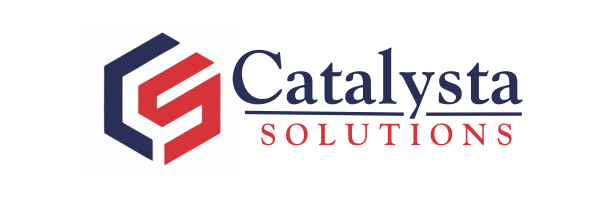Speciality Chemicals
A silicone or polysiloxane is a polymer made up of siloxane. Slicones range cosists of a diverse class of fluids, resins, or elastomers based on polymerized siloxanes. Their chemical inertness, resistance to water and oxidation, and stability at both high and low temperatures have led to a wide range of commercial applications. Silicones offer a unique, multi-functional combination of benefits to consumer and industrial applications spanning many markets.
Chemical Formula: CH 3[Si(CH 3) 2O] nSi(CH 3) 3 and Derivatives, Emulsions
Synonyms: PDMS, Dimethicone, Cyclo-Siloxane, Silicone Oil
Key Applications: Detergents, Cosmetics, Adhesives, Coatings, and Sealants
Cellulose is the main component of wood, paper and cotton. A wide range of Modified Cellulosic rheology modifiers/thickners are developed by chemical reaction to cater to various applications. Most common and documented uses include paint, mortar, food, cosmetics and pharmaceuticals.
Common Names: Hydroxyethylcellulose, HydroxyethylMethyl Cellulose, Hydroxyproyl MethylCellulose
Propylene Glycol is a viscous, colorless liquid which is nearly odorless but possesses a faintly sweet taste. It has applications in Paint, Food, Personal Care, Pharma and Agriculture industries. It is used as a carrier.
Chemical Formula: C3H8O2
Synonyms: 2-dihydroxypropane, 1,2-propanediol, methyl glycol, and trimethyl glycol
Key Applications: Pharma, Coatings & Construction, Cosmetics, Chemical Processing, Rubber
Glutaraldehyde is a colorless, oily liquid with a sharp, pungent odor. Glutaraldehyde is used for industrial, laboratory, agricultural, medical, and some household purposes, primarily for disinfecting and sterilization of surfaces and equipment. For example, it is used in oil and gas recovery operations and pipelines, waste water treatment, x-ray processing, embalming fluid, leather tanning, paper industry, in fogging and cleaning of poultry houses, and as a chemical intermediate in the production of various materials. It may be used in select goods, such as paint and laundry detergent. Glutaral is used as an antimicrobial agent in sugar mills and as a fixing agent in the immobilisation of glucose isomerase enzyme preparations for use in the manufacture of high fructose corn syrup A polymerized isomer of glutaraldehyde known as polycycloglutaracetal is a fertilizer for aquatic plants. It is claimed that it provides a bioavailable source of carbon for higher plants that is not available to algae. Though (…)
Chemical Formula: C5H8O2
Synonyms: Glutaric acid dialdehyde, Glutaric aldehyde, Glutaric dialdehyde, 1,5-Pentanedial
Key applications: Disinfection, Chemical Processing, Detergents, Cosmetics
Phenoxyethanol is an ether alcohol with aromatic properties. It is both naturally found and manufactured synthetically. Demonstrating antimicrobial ability, phenoxyethanol acts as an effective preservative in pharmaceuticals, cosmetics and lubricants 5.
Phenoxyethanol (EU), or PE, is the most commonly used globally-approved preservative in personal care formulations. It is very easy to use in various types of formulations and is chemically stable. Phenoxyethanol is a colorless, clear, oily liquid with a faint aromatic odor at room temperature and a low water solubility and evaporation rate. It is produced by reacting phenol (EU) and ethylene oxide (EU) at a high temperature and pressure. This substance occurs naturally in green tea (EU) 6.
According to the European Union Cosmetics Regulation (EC) n.1223/2009, phenoxyethanol is authorized as a preservative in cosmetic formulations at a maximum concentration of 1.0% 8.
Phenoxyethanol has been classified as an antimicrobial and preservative by Health Canada 7. It has also been used in vaccines and shown to inactivate bacteria, and several types of yeast 2.
Chemical Formula : C8H10O2
Synonyms: 2-phenoxyethanol, 2-Phenoxyethyl alcohol, beta-Hydroxyethyl phenyl ether, Ethylene glycol monophenyl ether, Phenoxytol, Phenyl cellosolve, Phenylmonoglycol ether
Key Applications: Cosmetics, Industrial and Institutional Cleaning
Cocamidopropyl betaine (CAPB), Non-ionic Surfactants (Nonyl phenol ethoxylates, Fatty Alcohol Ethoxylates, EO-PO Block Surfactants and others)
Cocodiethanolamide (CDEA), Cocomonoethanolamide, , Steareth-2, Steareth -21, Ceteareth-20, Isopropyl Myristate (IPM), thylene Glycol Di Stearate, Ethylene Glycol Mono Stearate, Cellulosic and Acrylic Rheology Modifiers
available on request.including herbal extracts and actives for cosmetics application.
A silicone or polysiloxane is a polymer made up of siloxane. Slicones range cosists of a diverse class of fluids, resins, or elastomers based on polymerized siloxanes. Their chemical inertness, resistance to water and oxidation, and stability at both high and low temperatures have led to a wide range of commercial applications. Silicones offer a unique, multi-functional combination of benefits to consumer and industrial applications spanning many markets.
Chemical Formula: CH 3[Si(CH 3) 2O] nSi(CH 3) 3 and Derivatives, Emulsions
Synonyms: PDMS, Dimethicone, Cyclo-Siloxane, Silicone Oil
Key Applications: Detergents, Cosmetics, Adhesives, Coatings, and Sealants
Cellulose is the main component of wood, paper and cotton. A wide range of Modified Cellulosic rheology modifiers/thickners are developed by chemical reaction to cater to various applications. Most common and documented uses include paint, mortar, food, cosmetics and pharmaceuticals.
Common Names: Hydroxyethylcellulose, HydroxyethylMethyl Cellulose, Hydroxyproyl MethylCellulose
Propylene Glycol is a viscous, colorless liquid which is nearly odorless but possesses a faintly sweet taste. It has applications in Paint, Food, Personal Care, Pharma and Agriculture industries. It is used as a carrier.
Chemical Formula: C3H8O2
Synonyms: 2-dihydroxypropane, 1,2-propanediol, methyl glycol, and trimethyl glycol
Key Applications: Pharma, Coatings & Construction, Cosmetics, Chemical Processing, Rubber
Glutaraldehyde is a colorless, oily liquid with a sharp, pungent odor. Glutaraldehyde is used for industrial, laboratory, agricultural, medical, and some household purposes, primarily for disinfecting and sterilization of surfaces and equipment. For example, it is used in oil and gas recovery operations and pipelines, waste water treatment, x-ray processing, embalming fluid, leather tanning, paper industry, in fogging and cleaning of poultry houses, and as a chemical intermediate in the production of various materials. It may be used in select goods, such as paint and laundry detergent. Glutaral is used as an antimicrobial agent in sugar mills and as a fixing agent in the immobilisation of glucose isomerase enzyme preparations for use in the manufacture of high fructose corn syrup A polymerized isomer of glutaraldehyde known as polycycloglutaracetal is a fertilizer for aquatic plants. It is claimed that it provides a bioavailable source of carbon for higher plants that is not available to algae. Though (…)
Chemical Formula: C5H8O2
Synonyms: Glutaric acid dialdehyde, Glutaric aldehyde, Glutaric dialdehyde, 1,5-Pentanedial
Key applications: Disinfection, Chemical Processing, Detergents, Cosmetics
Phenoxyethanol is an ether alcohol with aromatic properties. It is both naturally found and manufactured synthetically. Demonstrating antimicrobial ability, phenoxyethanol acts as an effective preservative in pharmaceuticals, cosmetics and lubricants 5.
Phenoxyethanol (EU), or PE, is the most commonly used globally-approved preservative in personal care formulations. It is very easy to use in various types of formulations and is chemically stable. Phenoxyethanol is a colorless, clear, oily liquid with a faint aromatic odor at room temperature and a low water solubility and evaporation rate. It is produced by reacting phenol (EU) and ethylene oxide (EU) at a high temperature and pressure. This substance occurs naturally in green tea (EU) 6.
According to the European Union Cosmetics Regulation (EC) n.1223/2009, phenoxyethanol is authorized as a preservative in cosmetic formulations at a maximum concentration of 1.0% 8.
Phenoxyethanol has been classified as an antimicrobial and preservative by Health Canada 7. It has also been used in vaccines and shown to inactivate bacteria, and several types of yeast 2.
Chemical Formula : C8H10O2
Synonyms: 2-phenoxyethanol, 2-Phenoxyethyl alcohol, beta-Hydroxyethyl phenyl ether, Ethylene glycol monophenyl ether, Phenoxytol, Phenyl cellosolve, Phenylmonoglycol ether
Key Applications: Cosmetics, Industrial and Institutional Cleaning
Cocamidopropyl betaine (CAPB), Non-ionic Surfactants (Nonyl phenol ethoxylates, Fatty Alcohol Ethoxylates, EO-PO Block Surfactants and others)
Cocodiethanolamide (CDEA), Cocomonoethanolamide, , Steareth-2, Steareth -21, Ceteareth-20, Isopropyl Myristate (IPM), thylene Glycol Di Stearate, Ethylene Glycol Mono Stearate, Cellulosic and Acrylic Rheology Modifiers
available on request.including herbal extracts and actives for cosmetics application.

